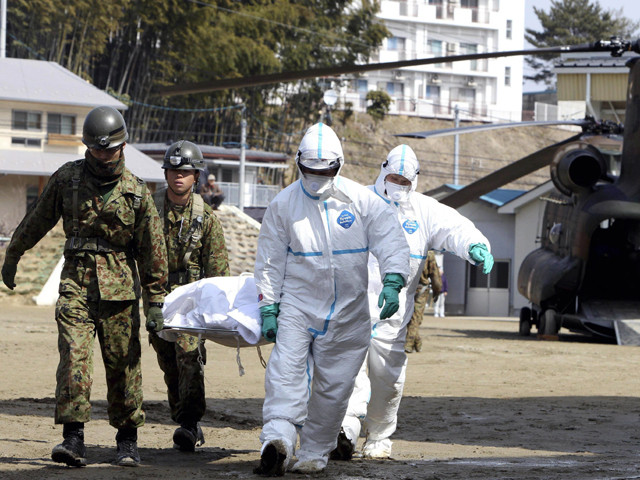
If nothing else works, plans call for pouring thousands of tons of concrete and turning the reactors into permanent nuclear tombs.
On the positive side: the disaster management was excellent. Stoic and disciplined, the Japanese behaved wonderfully well. No looting, no panic, and no anti-government demonstrations followed the explosions. People helped each other, relief teams operated unobstructed, and rescuers had full radiation protection gear. Plant operators risked their lives by working in super-high radiation environments, and engineers showed their grasp of emergency reactor dynamics.
On the negative side: even elaborate earthquake-protection and tsunami-protection measures failed badly. Power sources for emergency cooling pumps were destroyed by the 30-foot high wall of water. In retrospect, storing thousands of spent-fuel rods on the reactor site turned out to be a terrible mistake.
Japan’s near tragedy has reminded the world that situating reactors close to a city can be exceedingly dangerous – even more than storing nuclear bombs within it. While a nuclear reactor cannot explode like a bomb, after one year of operation even a rather small 200MW reactor contains more radioactive cesium, strontium, and iodine than the amounts produced in all the nuclear weapons tests ever conducted.
These devastatingly deadly materials could be released if the containment vessel of a reactor is somehow breached.
As the Japanese continue their struggle to bring Fukushima’s reactors under control, they know they had falsely gambled that nuclear reactors could be safe against earthquakes. Still, there was some logic to this risk-taking: Japan’s energy hungry economy gets about 30per cent of its electricity from its 55 nuclear reactors.
Pakistan has much less reason to risk Karachi, its largest city. The Karachi Nuclear Power Plant, (KANUPP) located by the seashore, produces little electricity. This Canadian supplied reactor has been in operation since December 1972, but according to IAEA statistics, has been unavailable for power production 70.4 per cent of the time. Even if it had operated as per design (120MW of electrical power), it could supply only six-seven per cent of Karachi’s total electrical power needs – barely enough for Golimar and Lyari.
Nevertheless KANUPP puts the Karachi’s population at risk. Sabotage, terrorist attack, equipment failure, earthquake, or a tsunami could result in large scale radioactive release. As in the 1986 Chernobyl disaster, the instinctive reaction of the authorities would be to cover up the facts.
But with the breeze mostly directed towards Karachi, the population would surely have to be evacuated. The rich and the fortunate would succeed; the rest would not. Unlike the orderly and disciplined evacuation of post-tsunami Fukushima, all hell would break loose as millions would try to flee. Looters would strip everything bare, roads would be clogged, and vital services would collapse.
Japan’s nuclear disaster should open our eyes. Japan is an advanced industrialised country with superior engineering knowledge and practices. It has a safety culture, Pakistan does not. Whether driving cars or running nuclear plants, Pakistanis are risktakers looking for shortcuts, choosing to put their faith in God rather than precautions.
It would not be surprising if our nuclear plant operators overlook critical safety procedures. Little is known about operating procedures because everything nuclear is kept under wraps, ostensibly for reasons of national security. This also covers up for bad practices.
The shoulder-shrugging nonchalance of Pakistani authorities during the Japan disaster is particularly disturbing. Even as explosions tore through the nuclear complex, the “experts” flatly declared that a Fukushima could never happen in Pakistan. This outlandish claim cost them nothing, of course, because officials and other high-ups in Pakistan have never paid the price for false statements. A real nuclear disaster in Pakistan would see PAEC, PNRA, and our “great scientists” – who provide endless vanilla-flavoured reassurances – running around like chickens with their heads cut off. They would be clueless in dealing with a situation that threatens the lives of millions.
The only thing they would know is how to run away fast.
It is time to down-size Pakistan’s nuclear fission power production.
While remaining a perpetual danger, nuclear technology has not met any reasonable fraction of Pakistan’s energy needs. After nearly half a century of investing in the Pakistan Atomic Energy Commission – and the billions of dollars spent upon creating its infrastructure – only two per cent of Pakistan’s installed nuclear capacity is nuclear. The actual production is less than even this.
India has not done well either. Only six per cent of Indian electricity is nuclear.
Clearly, nuclear electricity is not cheap or easy.
Contrary to popular public perception, Pakistan’s power reactors also make no contribution to Pakistan’s bombmaking capacity – the fissile material for these is produced elsewhere. Therefore there are multiple reasons why the search for more fission power must be shelved. Until nuclear fusion power becomes available after some decades, Pakistan, like other countries, must rely on a mix of oil, gas, hydro, coal, solar, wind, and other renewables.
The author is a nuclear physicist and holds a PhD from the Massachusetts Institute of Technology.
Published in The Express Tribune, March 22nd, 2011.


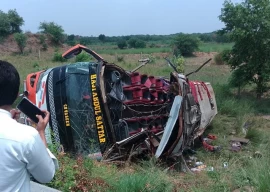

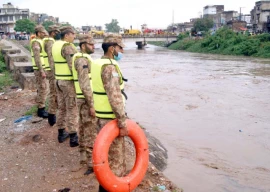
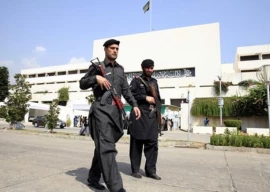





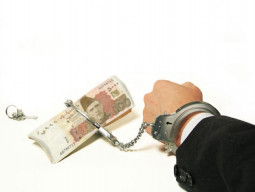






COMMENTS
Comments are moderated and generally will be posted if they are on-topic and not abusive.
For more information, please see our Comments FAQ